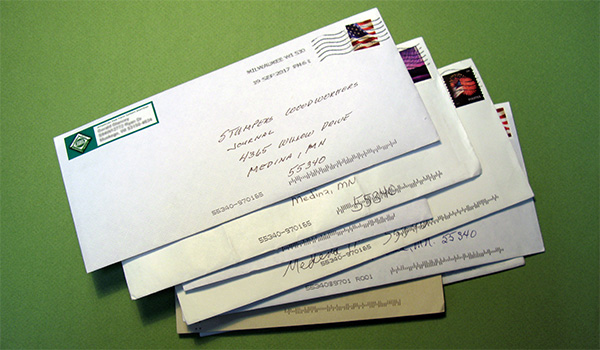
Web Surfers’ Review
Building an Assembly Table
To get ideas for assembly tables, a woodworker suggested checking out the variable height tables at lawnmower repair shops. He thought they provide a better solution than cables hanging from a ceiling, which interfere with access while you work.
Q&A
When Does It Need Sharpening Redux?
Agreeing with Simon Watts’ comments about using common sense and personal inspection rather than “some gizmo,” a writer took issue with Michael Dresdner’s ammeter hookup suggestion. His first objection was … well, rather complicated and if you want, you can read it here verbatim. Secondly, however, he pointed out that the type of wood, a dirty blade, or pinching by a warp can all load the machine differently and render the ammeter reading useless. Thirdly, he thought operators would be safer watching the blade, the wood, and their fingers, instead of monitoring an ammeter.
A self-described electrician and journeyman woodworker was compelled to reiterate Michael’s admission that the loop of wire used to clamp on the ammeter violated the NEC (National Electrical Code). The rule states that all current carrying conductors must be protected from unqualified personnel or from damage. That means that the wires must be either in conduit, electrical boxes, or somewhere protected from damage at all times … in other words, inaccessible.
Getting out Glue Spots?
Our experts were way off the mark about glue removal. At least that’s the opinion of one correspondent who shared a technique he’d developed over his many years as a professional finisher: When staining a piece and finding a spot of glue, take a piece of sandpaper (80-100 grit) and soak it with stain. Sand out the glue spot. Then re-sand with stain again with 100-120 grit sandpaper, to smooth out the scratches. Works every time, but … you must do your sanding within one or two minutes of coating your project with stain.
Reader’s Response
Cleaning Blades
A woodworker suggested that washing with lye was particularly effective in getting pitch off blades … and be sure to wear gloves!
Other Readers’ Comments
A woodworking doctor sent in his views on the ShopSmith: Though it has an excellent lathe, he was constantly aware of the limitations when he used it as a saw. He considers the 10″ blade to be too big for the table saw and therefore dangerous. And as soon as he had room and the money, he bought a table saw.






